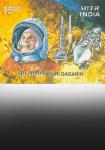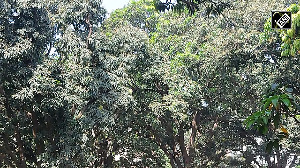Playboy is coming to India -- only, of course, it won't be Playboy. That's because India might be liberalising, but it still remains puritan (okay, we'll ignore the music remixes on television for the purpose of this article).
So, though Playboy wants to grab a slice of the men's reading market, it's going to dress up its bunnies, and change its name. At least, that's the plan for now. No local partners have been announced yet.
All Christie Hefner, Playboy Enterprises' chief executive, is willing to commit so far, is the strategic difference that Playboy will create for the Indian market. "This is quite a departure for us," she told reporters in December.
Other magazines, of course, have had no such problems. Foreign they might be in perception, but titles like Marie Claire, Maxim and Good Housekeeping are now hotting up the publishing market in India.
What is it that's prompting media houses to bring foreign titles into India? Says Hoshang Billimoria, CEO, NextGen Publishing, "The special interest space in India is booming, and foreign titles gives another interesting option to readers." NextGen has three foreign titles in India -- Car India, Bike India and, recently, Computer Active.
Says Piyush Sharma, CEO, Maxim India, "People are looking to special interest magazines as there is an overdose of general news and unless you do news stories with a twist, the reader might not pick up the magazine as the news gets done and dated till the magazine is out."
Media Transasia has plans for two or three more foreign titles for India by end-2006, but isn't talking yet on what these could be.
Since most magazines are special interest, they get niche advertisers. Car India and Bike India get auto-based advertising, while Maxim is attracting fashion and lifestyle advertising.
Advertisers prefer special interest publications as they help address a marketer's target audience with little wastage as compared to either general magazines, dailies or the electronic media.
It was actually India Today that started the trend with Cosmopolitan. It has since added Good Housekeeping, Fortune and Golf Digest to its roster.
The Outlook Group too has tied up with French publishing company Group Marie Claire to publish the international women's magazine Marie Claire in India. The launch date has still to be announced.
Since the opening up of foreign investment, several big international players have been attracted to the Indian print market, lured by high consumer spending and rising advertising revenue.
But will the trend last? "The most important thing", says Billimoria, "is keeping in mind the content. If you Indianise the content, then the reader will get hooked on as it appeals to him." But if the content is, say, 70 per cent foreign and 30 per cent Indian, the product might just fail.
As Sharma puts it, "The USP of the product has to be relevant content and affordable price."
As long as the readers are happy and it is easy on their pockets, the special interest magazine space will boom. But for how long is the question. We will be watching it with interest.







 © 2025
© 2025